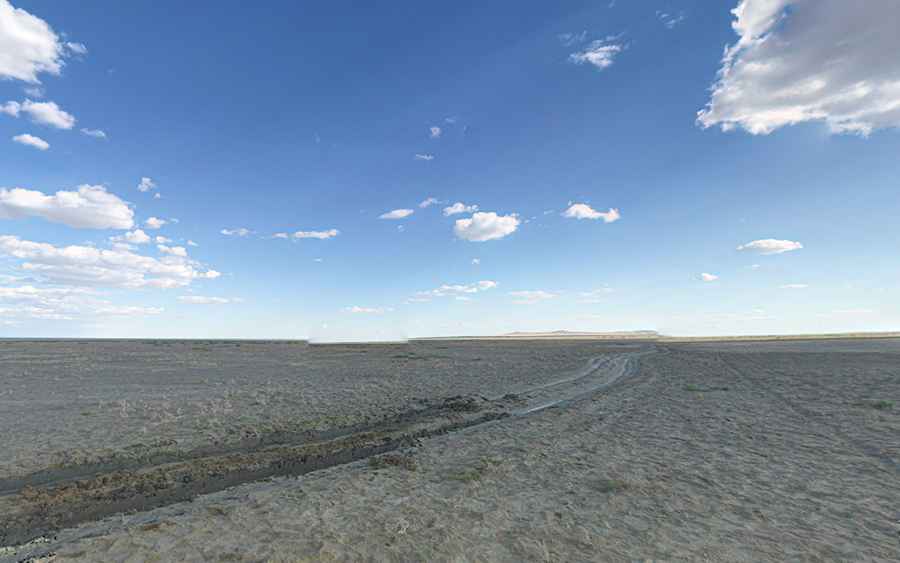How to Get to Kantubek: Exploring the Ghost Town in the Aral Sea and Its Chemical Weapons Legacy
Kantubek is a ghost town located on Vozrozhdeniya Island in the Aral Sea, in the Republic of Karakalpakstan in Uzbekistan, near the Kazakhstan border. It is not a typical tourist destination, and visiting it would require special permits, careful preparation, and awareness of the potential health risks. It remains an eerie and dangerous place, largely off-limits to the public.

Abandoned After the Soviet Union's Collapse
The town still appears on maps but was abandoned in 1992 following the dissolution of the Soviet Union. It has since been demolished, and there are plans to convert the area into a national park. Kantubek once had a population of approximately 1,500 people and housed scientists and workers at the Soviet Union’s top-secret Aralsk-7 biological weapons research and testing site.
Decontamination Efforts: Tackling the World's Largest Anthrax Dumping Ground
In the spring and summer of 2002, a team led by Brian Hayes, a biochemical engineer with the United States Defense Threat Reduction Agency, neutralized what was believed to be the world's largest anthrax dumping ground on the island. His team of 113 people managed to neutralize between 100 and 200 tonnes of anthrax over a three-month period, with the cleanup operation costing around US$5 million.
Vozrozhdeniya Island: A History of Biological Weapons Testing
Vozrozhdeniya Island—which means "Rebirth Island" in Russian—was part of a larger complex where the Soviet Union tested biological weapons from 1954 onwards. The island, now split between Uzbekistan and Kazakhstan, also housed Komsomolskiy Island, which no longer exists.
Kantubek: The Soviet Town Built for Biological Weapons Research
Kantubek, also known as Aralsk-7, served as a residential area for scientists and workers involved in biological weapons testing at the facility. The town was equipped with basic infrastructure, including a social club, stadium, schools, and shops, to support its inhabitants.
The 1971 Smallpox Outbreak: A Tragic Incident in Kantubek
In 1971, a tragic incident occurred when smallpox was accidentally released from the facility, leading to an outbreak that infected 10 people, 3 of whom died. Following the collapse of the Soviet Union, the site was abandoned in 1992, leaving Kantubek a ghost town. Over the years, decontamination efforts were undertaken, including a U.S.-funded project in 2002 to address anthrax burial sites. Despite these efforts, the area remains largely uninhabited and in ruins.
The Ecological Collapse of the Aral Sea
The Aral Sea, once the fourth-largest inland lake in the world, has suffered severe ecological collapse due to large-scale irrigation projects by the Soviet Union in the 1960s. The diversion of the Amu Darya and Syr Darya rivers to irrigate crops caused the sea to shrink drastically, leaving behind salt flats and toxic dust. This environmental disaster led to the destruction of ecosystems, the collapse of local fishing industries, and severe health issues for surrounding communities. Efforts to partially restore the North Aral Sea, such as the Kok-Aral Dam, have seen some success, but much of the southern part remains dry, becoming the Aralkum Desert. The disaster remains a stark reminder of the consequences of unsustainable water management and environmental neglect.
Can I Drive to Kantubek?
Visiting Kantubek is extremely difficult and highly discouraged due to several factors:
- Contamination and Safety Concerns: Kantubek was home to a biological weapons research facility, and while decontamination efforts have been made, the area still poses significant health risks. There are concerns about lingering anthrax and other dangerous pathogens in the soil and environment.
- Isolation: Kantubek is located on Vozrozhdeniya Island, which is in the middle of the Aral Sea, and is only accessible by boat or helicopter. The island is very remote, and getting there requires specific planning, including obtaining permissions from both Uzbekistan and Kazakhstan authorities.
- Restricted Access: The area around Vozrozhdeniya Island is largely abandoned and falls under restricted zones due to its historical use as a biological weapons test site. Permission to visit is often not granted to tourists due to safety and political reasons.
- Ecological Damage: The Aral Sea itself has been undergoing ecological restoration, and areas around the sea, including the island, are not typical tourist destinations due to their environmental and health hazards.
How Long Is the Road to Kantubek?
The road to Kantubek is about 200 km (125 miles) long, starting from Moynaq, also spelled Muynak, a city in northern Karakalpakstan, and the seat of the Moynaq District. The road is totally unpaved, and a 4x4 vehicle is required due to sand.
Pic: Tibor Kovács